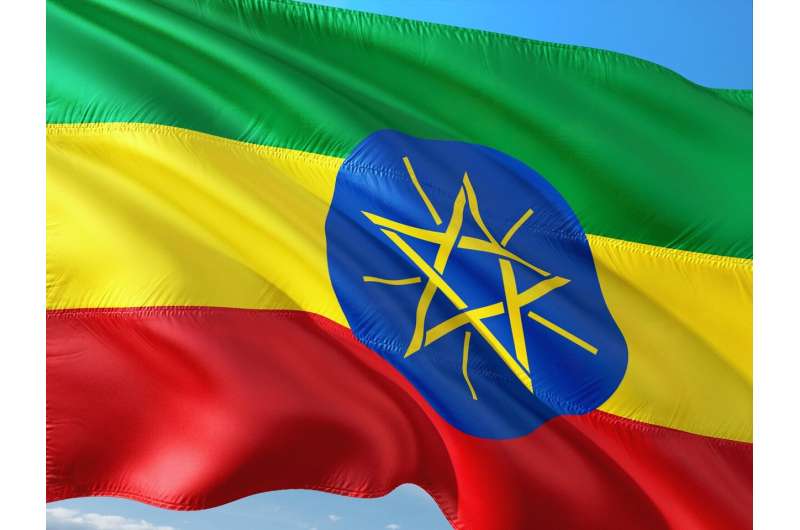
The war in Ethiopia’s Tigray region broke out on 4 November 2020. A survey done in parts of Tigray and investigative reports by human rights bodies Amnesty International and the Human Rights Watch show that thousands of civilians have been killed. The US and European Union have warned that more than 2.1 million internally displaced people and over 70,000 refugees are facing a humanitarian crisis.
Ethiopian and Eritrean forces have committed a series of crimes in Tigray. There are allegations that there’s been destruction and looting of available food supplies and farming has been rendered impossible. A subsequent blockade has forced about 900,000 people in Tigray to live under famine conditions.
Attacks on health facilities and workers are unfortunately not uncommon in war. However, the rate and scale of the destruction of Tigray’s healthcare system is severe.
Before the war, the Tigray region had 47 hospitals, 224 health centers, 712 health posts and 269 functional ambulances. Doctors Without Borders (MSF) reports that most facilities were first looted by ground forces and then destroyed or turned into military camps. This highlights the systematic nature of the attacks.
A recent assessment by the United Nations Office for the Coordination of Humanitarian Affairs and others indicated that about 70% of assessed hospitals and health centers in the region have either been partially or fully damaged. As a result, over 2.5 million people are without access to essential services.
It is a full-fledged attack on the region’s health system, including health workers, patients, health facilities, ambulances, medical supplies and equipment. In less than five weeks, it was reported that more than 200 health facilities were destroyed, looted or damaged.
We carried out an extensive review of reports by international organizations and human rights bodies on the war in Tigray, looking into the scale and nature of the attack on the health system and deteriorating health and humanitarian crisis.
Our best estimate is that the region’s healthcare system could be in a similar (if not worse) position to the early 1990s, when it had only four functional hospitals, 10 health centers and 102 clinics.
Healthcare targeted
In total breach of international humanitarian law, Eritrean and Ethiopian forces have destroyed or looted health facilities.
The remaining health facilities are barely functioning due to the siege on Tigray, which is blocking the supply of medicines and basic services such as banking, telecommunication, fuel and electricity.
Only 30 of the region’s 280 ambulances are still available in public health facilities and the only oxygen producing plant and pharmaceutical company in Tigray were looted and then destroyed according to a former government official.
Health workers appear to have been deliberately targeted. Initial reports show that health care workers were either displaced, killed in the conflict, or had their services terminated. In one report a nurse claimed that only 10 Tigrayans remained of the roughly 400 who worked at the hospital where he had been employed. The rest were killed or had fled.
By early September, reports showed that 23 humanitarian workers had been killed, resulting in the suspension or scaling back of humanitarian assistance in Tigray.
Ethiopia’s healthcare system witnessed remarkable improvements over the past three decades. The Tigray region had some of the best health outcomes in the country. Before the war began, 94% of women in Tigray had access to skilled antenatal care; 72% gave birth in a health facility; and 63% made use of postnatal care services. And more than 96% of children were vaccinated. Tigray also had made remarkable achievement in preventing and controlling communicable diseases, including tuberculosis, malaria, and HIV.
The destruction of the health system has left millions of people without access to basic healthcare services. Throughout Tigray, pregnant women are left without basic maternal health services and hundreds of thousands of children need immunization. The UN reported that polio vaccines are needed for 887,000 children and measles vaccines are needed for 790,000 children. Failure to administer the shots could result in an outbreak.
The scale and nature of the destruction of the health system in Tigray suggest that the intention of the attack is not just limited to the course of the war, but also to impose long-term crisis and challenge the post-war rehabilitation process.
Lifting the siege
The targeting of healthcare in Tigray, as a part of the broader war, has led to the collapse of the sector. Compounded by the destruction of livelihoods and complete blockade of aid and services, more than six million people in Tigray are facing a terrible humanitarian crisis.
Source: Read Full Article



